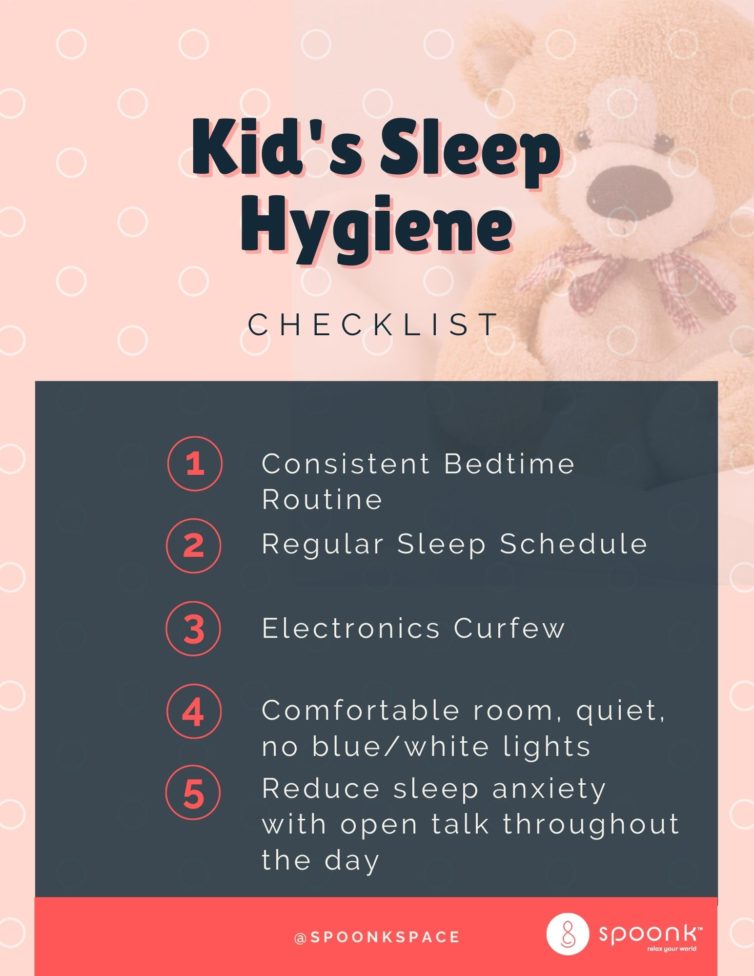What is Spoonk acupressure doing for mind and body
“The little spikes stimulate circulation and help me feel reenergized throughout the day…It’s such an easy way for me to release muscle tension and reduce


Bedtime can be a struggle for many kids, and especially for their parents. If your child or teen has trouble winding down before bed or seems to not be getting enough restful sleep, there are a few things you can try that may be helpful. We recommend going to the doctor first, so you can have your child checked for rare but serious conditions that may affect their sleep, such as childhood apnea or restless leg syndrome. Once you get the green light from the doctor, try this checklist to help your child sleep better.

Sleep Hygiene Checklist For Kids
We know how frustrating it might be for you to be dealing with a child who is fighting you to go to bed or has trouble staying asleep. As tempting as it might be to simply give them a sleeping pill or supplement, it is not advisable to do so without a doctor’s order. Try implementing this checklist as well as the other tips we have on our blog and you just might find the one that makes the difference for your child.
“The little spikes stimulate circulation and help me feel reenergized throughout the day…It’s such an easy way for me to release muscle tension and reduce
How does menopause affect the brain? For every man suffering from Alzheimer’s, there are two women. Why is that the case? Well, according to neuroscientist Lisa
Cumulative stress is costing you your life. We all know what happens with unpaid credit card bills—the stress you accumulate ultimately taxes your life span,
Mind Your longevity is a mindset. The link between stepping outside your comfort zone and your longevity will blow your mind! Have you heard
Spoonk is not enough? For years, the Spoonk mat has been a trusted tool for promoting relaxation, easing back muscle tension, and helping users unwind